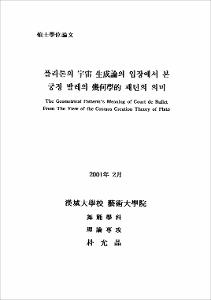플라톤의 宇宙 生成論의 입장에서 본 궁정 발레의 幾何學的 패턴의 의미
- Files in This Item:
-
-
Download
 000000066018.pdf
기타 데이터 / 2.43 MB / Adobe PDF
000000066018.pdf
기타 데이터 / 2.43 MB / Adobe PDF
-
Items in Repository are protected by copyright, with all rights reserved, unless otherwise indicated.
 000000066018.pdf
기타 데이터 / 2.43 MB / Adobe PDF
000000066018.pdf
기타 데이터 / 2.43 MB / Adobe PDFItems in Repository are protected by copyright, with all rights reserved, unless otherwise indicated.